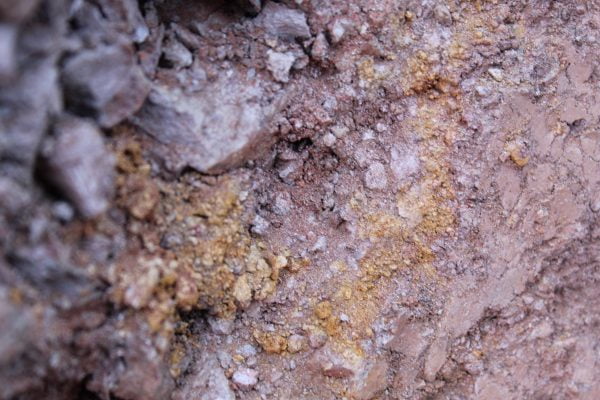Zimbabwe is widely regarded as the richest nation on earth in terms of untapped mineral resources per capita.
The country is blessed with the world’s largest diamond reserves, second largest platinum reserves after South Africa and over 40 exploitable minerals. Gold is literally everywhere in the country.
Chrome abounds along the Great Dyke, a unique geological formation that runs almost through the middle of the country from the south to the north. Coal-bed methane gas is found in the Lupane-Hwange sector of Matabeleland North as well as in Gokwe in the Midlands. Natural gas deposits occur in Chiredzi as well as along the Zambezi Valley.
With the world’s automotive industry moving away from heavily polluting liquid fuels – petrol and diesel – to cleaner, renewable energy sources anchored by lithium batteries to propel engines, Zimbabwe is seen playing an increasingly central role in the mining of that mineral whose deposits are found in Bikita in Masvingo, Kamativi in Matabeleland North and Mashonaland East.
It is estimated that Zimbabwe is the fifth largest producer of lithium globally after Australia, Chile, Argentina and China. The position is largely based on output from one mine, Bikita Minerals which suggests that if projects in Mashonaland East and Matabeleland North are fully developed as will come to pass in the next few months, the ranking will shoot up.
Other minerals found in the country are iron, asbestos, nickel, coal, and silver as well as rare earth elements.
Large mining companies are active here, among them Zimplats and Mimosa who are mining platinum, Metallon Corporation Group which runs a number of gold mines, Prospect Resources which is developing the Arcadia Lithium Project near Harare, Invictus Energy which is in the initial states of exploring for natural gas in Muzarabani and Karo Resources who are finalising the resource exploration and quantification programme at its mining site for the ,2 billion platinum investment in Mhondoro-Ngezi Mashonaland West Province.
We expect to see the signing very soon of a joint venture agreement between Katanga, a partnership between the Chiadzwa Community and London Stock Exchange listed exploration and mining company, Vast Resources and the Zimbabwe Consolidated Diamond Company.
Alrosa, the Russian giant which is the world’s biggest diamond producer, is one of the few companies picked by the Government to begin diamond mining in Manicaland. London Stock Exchange-listed Vast Resources and China’s Anjin are the others.
Although the country has a lengthy mining record from the rudimentary workings dating back to the Seventh Century, according to the Zimbabwe Geological Survey, the mining industry has definitely not punched to its weight; rather it punches well below its weight given its world-class potential.
Why this has been the case is that there has not been strict focus on that industry. The impact of this has manifested itself in limited investment in exploration of the resources that have the potential to turn Zimbabwe into the jewel of Africa. Exploration is the basis for any modern investment in mining thus when and where there is poor investment in the upstream side of the value chain; we cannot expect an extractive industry to emerge.
On Monday, President Mnangagwa launched what is in our view the most comprehensive blueprint specifically for the mining industry, a plan that should result in the building of a US$12 billion sector by 2023. Gold is expected to contribute US$4 billion, platinum US$3 billion while chrome, iron, steel, diamonds and coal will contribute US$1 billion each. Lithium is seen contributing US$500 million while other minerals will contribute US$1,5 billion.
“The objective of this strategic roadmap is to facilitate the exploitation processes of the country’s minerals throughout their entire value chain that is from exploration, mining metallurgical processing, value addition and beneficiation,” said the President.
“My Government is desirous to transform the mining industry and ensure that the country achieves social equity and equality around communities where mining takes place. In this regard, the sector should enhance and adopt best practices, including occupational safety, health and environmental management in order to ensure appropriate healthy conditions of employees, local communities and the general public.”
We have seen much investor interest in the economy in recent months, particularly in the mining sub-sector and hope that after the Monday launch the interest would grow bigger.
As the President said, we want more investment, not only in extraction of the bountiful minerals that lie underground but also in value addition and beneficiation. We want to see a whole diamond sorting, polishing, cutting and jewellery manufacturing industry developing in the country. The nation will benefit more if one takes into consideration that a carat of diamond grows seven times in value from extraction to the stage where it is set on that adorable ring, wrist watch or bracelet.
Furthermore, we must make lithium batteries here so that Panasonic and Telsa, the world’s biggest battery and electric vehicle makers, buy them from here. Yes, platinum miners launched a refinery some five months ago, which is commendable progress on the path to greater local value addition and beneficiation of locally extracted mineral resources. However, much more potential exists for more domestic platinum products manufacturing.
If all steps as enunciated by the President are taken, the US$12 billion mining industry that we all desire will be possible in the next four years_The Chronicle
.png)




